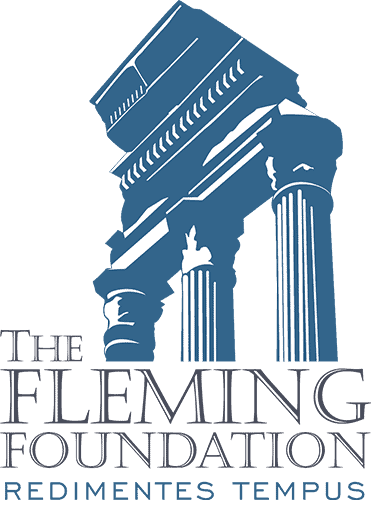The Seven Against Thebes, II: Mythological Background
Let us turn to the story of the play, which draws upon the same mythological background as Sophocles Theban plays, written a generation later. The Seven is the third play of trilogy, a set of three plays, in this case, as in the Oresteia, forming a coherent and interrelated whole.
The story is a central part of a mythical cycle set in Thebes. Now, if you read a conventional history of ancient Greece, the main focus is on Athens, her rise to power, her defeat at the hands of the Spartans and their allies, and her great cultural achievements. Secondarily, we shall read of Sparta as a bizarre variant on the Greek cultural pattern, and thirdly, some account would be given of the Ionian cities on the islands and the coast of Asia Minor, where science and philosophy were born. Naturally we should hear of other major cities—Argos, Thebes, Corinth, Aegina, Megara—and peoples like the Thessalians and Phocians—but it is the rare historian who troubles himself to attempt a coherent account of even great cities like Corinth and Thebes, much less to present their point of view.
And Thebes most decidedly had a point of view. Thebes had been a great city in the Bronze Age and in the Archaic Period—the centuries leading up to the Persian Wars—she remained a powerful force in central Greece and a competitor with Athens. Because of her hostilities with Athens, Thebes “medized” during the conflict with the Persian conflict, that is, she was a collaborator with the enemy of her enemy as she was later, during the Peloponnesian War, an ally of Sparta against the common enemy. The great lyric poet Pindar was a Theban and trod warily around his city's policies. Basil Gildersleeve, America's greatest classical scholar, wrote a school commentary on Pindar and invoked him as a model. In talking about Thebes in the context of the War Between the States, during which he rode with Jeb Stuart, the Charleston bred Gildersleeve comments--in a passage his editors begged him to remove:
The man whose love for his country knows no local roots is a man whose love for his country is a poor abstraction; and it is no discredit to Pindar that he went honestly with his state in the struggle. It was no treason to Medize before there was a Greece, and the Greece that came out of the Persian War was a very different thing from the cantons that ranged themselves on this side and on that of a quarrel which, we may be sure, bore another aspect to those who stood aloof from it than it wears in the eyes of moderns, who have all learned to be Hellenic patriots. A little experience of a losing side might aid historical vision.
From the Theban perspective, Athens, while an ancient city, was something of an upstart. Athenian historical legends are rather thin, and her greatest hero, Theseus, has clearly been remodeled in imitation of Heracles. Thebes, the home of Heracles and the House of Labdacus, had no need to borrow from anyone.
Before giving a brief outline of the violent ancestry of Eteocles and Polynices, I should warn readers that we are sailing into dangerous waters. There are huge controversies over, first, what Attic playwrights knew of such tales, and two, how much knowledge they could take for granted in their audience. We hear only a few things about a Theban Cycle of epic poems (as a parallel to the Trojan Cycle) in which the story, which takes place in generations before the Trojan War, of the ruling dynasty of Thebes was told. One important connection between the two cycles is the character of Diomedes (in the Iliad), who is the son of the Aetolian hero and Athena’s favorite Tydeus and the daughter of King Adrastus of Argos. He was among the most celebrated of the seven champions who attacked Thebes in the generation before the Trojan War.
Later mythographers trace the descent of Oedipus and his offspring back to Cadmus, the Phoenician immigrant who taught the Greeks the alphabet, and the goddess Harmonia Harmonia. The children of the match were a tragic lot: Semele, the mother of Dionysus, Agave, and Ino. Agave was the mother of the unfortunate Pentheus who reigned as king until his own mother, in a Bacchic frenzy, killed him. Cadmus’ one son Polydorus succeeded to the throne, which was inherited by his son Labdacus. In one version, Labdacus suffered a fate similar to that of Pentheus and was succeeded by his son Laios, who married Jocasta, a descendant of the Spartoi—“the sown men”, who were sprung up from the soil of Thebes, which Cadmus had sown with dragon's teeth, and thus true sons of the soil.
Laius, king of Thebes, disobeys Apollo’s injunction against having children and exposes his son Oedipus, and the grown Oedipus, after killing an unknown stranger in a quarrel arrives in Thebes and in ignorance marries his mother. He eventually realizes that he has fulfilled the oracle by killing his father and marrying his mother and, after blinding himself, he curses his children, particularly his two sons Eteocles and Polynices, who may or may not have done something additional to offend him. Eteocles expels Polynices, who goes to Argos, marries king Adrastos’ daughter, and assembles an army, led by himself and six other champions, to attack and sack Thebes. The city is defended by Eteocles and six chosen champions. All the heroes fall in battle killing each other.




I’ve ordered several versions from ABE. Meanwhile I’m reading on Kindle a download from Gutenberg. This is a verse translation by John Stuart Blackie ca 1850. It’s pleasant reading but no doubt a long way from the original.
I think I have a couple different translations floating around the house somewhere. Not sure how much I can contribute to a discussion, but I look forward to following along.
I sprang for the Loeb, but it remains socially distant. Not sure what is taking so long.
Weir Smyth’s Loeb translation is available at Perseus (albeit in awkward form): http://www.perseus.tufts.edu/hopper/text?doc=Perseus%3atext%3a1999.01.0014
and t https://www.theoi.com/Text/AeschylusSeven.html
Great. The theoi link seems to have a more convenient display.
Thank you, Dr Fleming.